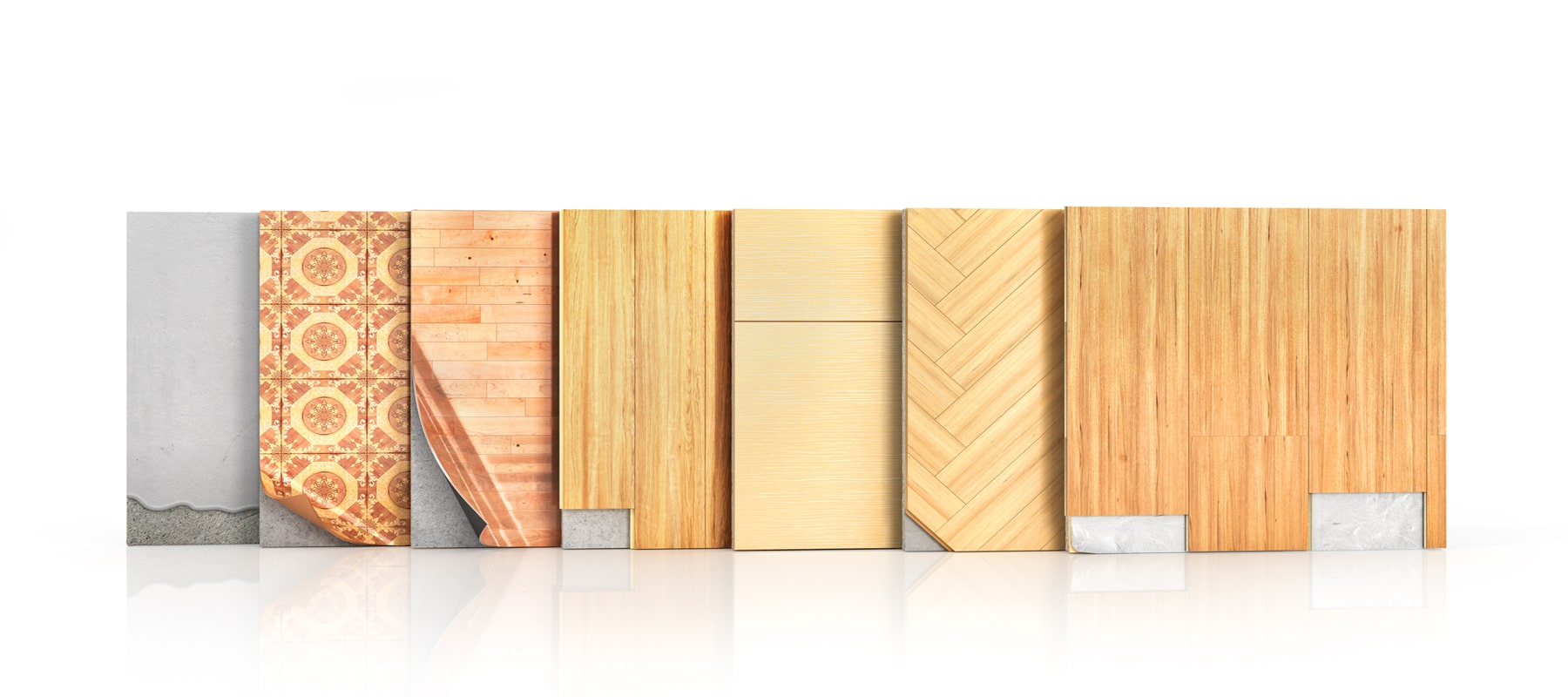How Much Does Engineered Hardwood Flooring Cost?
Last Updated: January 14, 2022
On This Page
Engineered hardwood now accounts for nearly 1/3 of the wood flooring market in the United States. The reason for this is simple: engineered wood looks identical to solid wood floors but is easier to install and more stable. If you're considering engineered hardwood for your home, read on to learn more about the options and costs associated with this versatile flooring product.
Engineered Wood Floors: How They're Made #
Solid wood floors are milled from a single section of hardwood. Engineered wood floors, by comparison, have only a top layer of solid wood. Beneath the veneer are thinner layers of plywood, hardwood, or high density fiberboard glued crossways to each other. The thickness of the solid wood veneer and the number of core layers vary from product to product.
The Benefits of Engineered Hardwood #
While the use of cheaper woods such as plywood seems to suggest a cheap hardwood alternative, the "engineered" aspect of this flooring in fact contributes to greater dimensional stability. As a result, engineered hardwood is less affected by moisture and changes in temperature than solid hardwood and better-suited to the following applications:
- Below grade installations (basements)
- Above radiant heating systems
- On concrete subfloors
- Light-moisture areas (kitchens and bathrooms)
- Humid areas
And unlike solid hardwood, which must be glued or nailed to a wooden subfloor, engineered hardwood can be installed as a floating floor (unattached to the subfloor), making it very feasible to install the flooring as a DIY project. Some engineered floors even have click and lock tongues and groove that make installation extremely fast and clean.
Engineered Wood Floor Considerations #
Engineered wood flooring is available in any wood species that solid hardwood is sold in. From domestic species such as red oak and walnut to exotic species like Brazilian cherry and African wenge, every solid wood product has an engineered equivalent.
There are, however, significant differences between individual engineered wood flooring products. When determining the quality of engineered flooring, pay particular attention to:
- Top layer thickness: The hardwood veneer, or wear layer, might be as thin as 0.5mm and as thick as 5mm. A thicker wear won't necessarily be more durable (durability is determined by the hardness of the wood species), but it can be refinished more easily and more often. All wood floors suffer some damage over time. Nicks, dents, and scratches, however, can be sanded out. But if the wear layer is too thin, sanding is extremely difficult, and sanding multiple times is out of the question.
- Number of layers: Generally speaking, more layers equates to better stability and a better product. Engineered wood floors with 3, 5, 7, and 9 plies are available.
- Number of finish coats: All engineered wood flooring products are prefinished, meaning they come direct from the factory ready-to-install. But while it's not necessary to apply a protective finish coat to engineered flooring, it's important to pay attention to how many finish coats the product has, as more coats result in better protection. Most engineered flooring has between 5 and 10 finish coats.
Engineered Hardwood Flooring Costs #
- Engineered flooring starts at about $3 per square foot and might cost as much as $15 per square foot. Cheaper products have a thinner topcoat and protective finish as well as fewer layers, while more expensive products have thicker veneers, more layers, and more protective coats.
- Expect to pay an additional $2 to $5 per square foot for installation, depending on the method (glue-down, fasten, or floating). It's possible to cut out installation charges entirely by laying down the flooring yourself.
